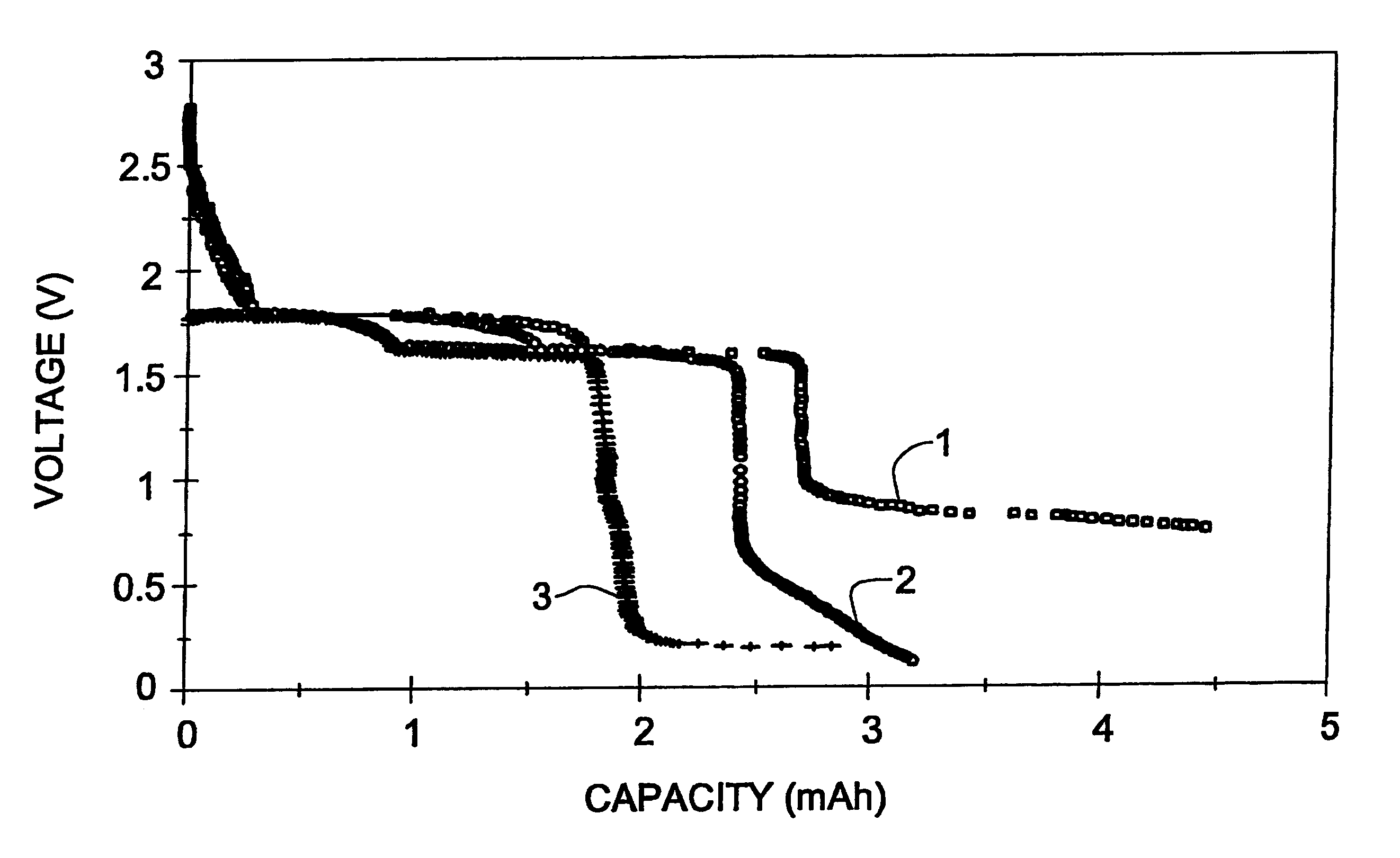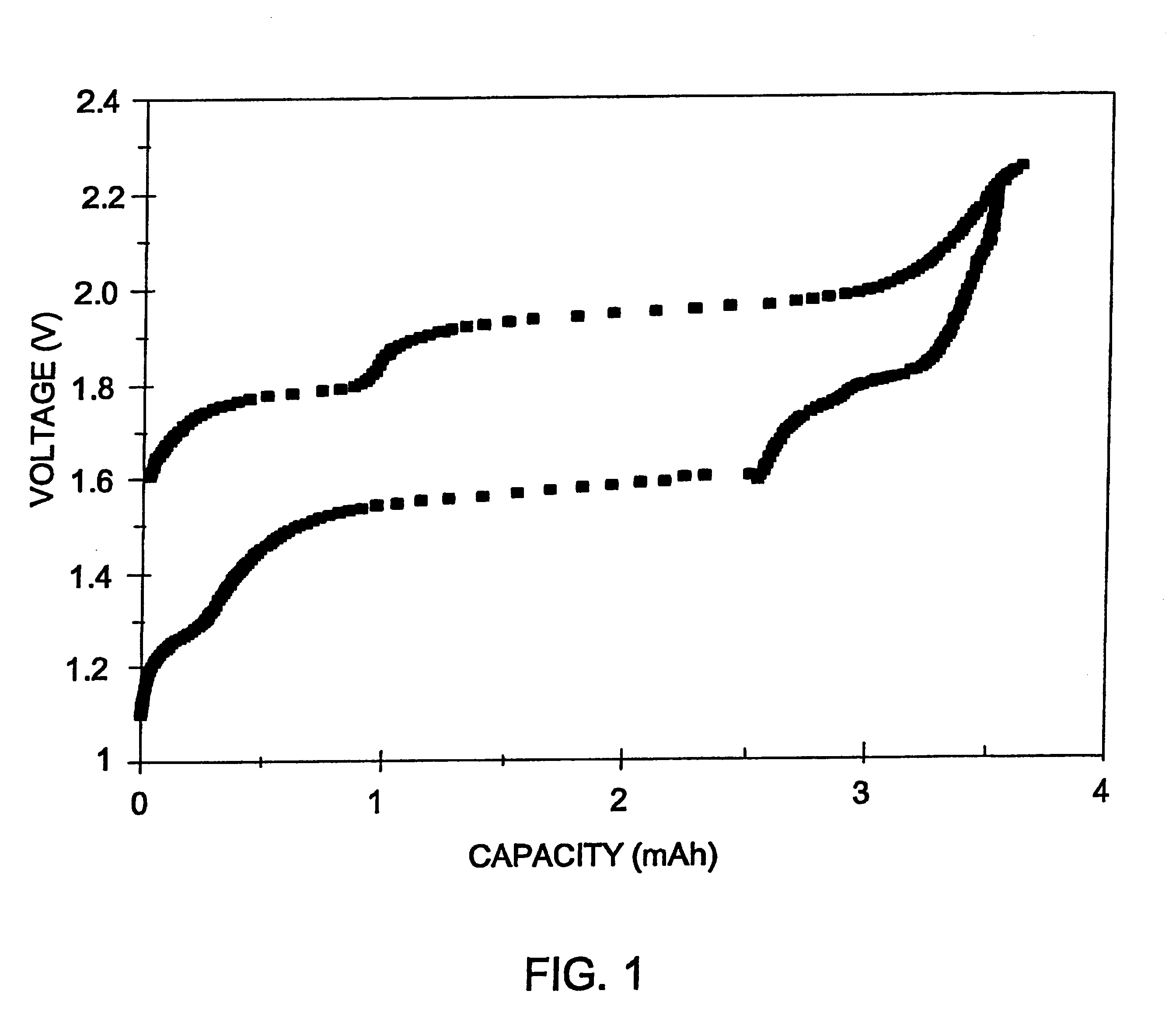Long cycle-life alkali metal battery
a technology of alkali metal batteries and cycle life, applied in the direction of secondary cell charging/discharging, non-aqueous electrolyte cells, positive electrodes, etc., can solve the problems of short cycle life, insufficient cycle life and safety of these batteries, and low charge rate, so as to achieve fast charge rate and improve cycle life , the effect of long cycle li
- Summary
- Abstract
- Description
- Claims
- Application Information
AI Technical Summary
Benefits of technology
Problems solved by technology
Method used
Image
Examples
example 2
A Li / CPE / FeS.sub.2 cell with a 7 .mu.m thick film composite cathode was prepared and assembled as described in Example 1, starting with the following starting materials: 3.3 mg LiI, 21.6 mg P(EO), 4.1 mg EC and 100.8 mg FeS.sub.2. For the preparation of ultra tin cathodes, 7 .mu.m pristine pyrite powder was used. This powder was prepared by ball milling the pristine pyrite for 48 hours. In order to prepare a cathode with good mechanical properties and having a good contact with the polymer electrolyte, the polymer electrolyte was casted directly onto the composite cathode film. The resultant two-layered film was placed between the Li anode and the graphite current collector. The SEI was built twice during the first and fifth cycles at 200 .mu.A / cm.sup.2 down to 0.8 V. The total SEI formation capacity was 1.5 mAh. The cell went through over 420 reversible cycles (100% DOD), and the degree of degradation did not exceed 0.11% / cycle. (FIG. 3).
example 3
A Li / CPE / FeS.sub.2 cell with a 7 .mu.m thick film composite cathode was prepared and assembled as described in Example 2. The SEI was built during the first discharge at 50 .mu.A / cm.sup.2 down to 0.76 V. The SEI formation capacity was 1.76 mAh / cm.sup.2. The cell went through over reversible 290 cycles (100% DOD), with the degree of degradation being 0.19% / cycle. (FIG. 3)
example 4
A Li / CPE / FeS.sub.2 cell with a 7 .mu.m thick film composite cathode was prepared as described in Example 2. The SEI was formed twice, during the first discharge at 50 .mu.A / cm.sup.2 and the fifth discharge at 200 .mu.A / cm.sup.2 down to 0.815 V. The SEI formation capacities were 1 and 0.5 mAh / cm.sup.2, respectively. The cell went through over 235 reversible cycles (100% DOD), and the degree of degradation did not exceed 0.16% / cycle (Table 1, FIG. 3)
PUM
 Login to View More
Login to View More Abstract
Description
Claims
Application Information
 Login to View More
Login to View More - R&D
- Intellectual Property
- Life Sciences
- Materials
- Tech Scout
- Unparalleled Data Quality
- Higher Quality Content
- 60% Fewer Hallucinations
Browse by: Latest US Patents, China's latest patents, Technical Efficacy Thesaurus, Application Domain, Technology Topic, Popular Technical Reports.
© 2025 PatSnap. All rights reserved.Legal|Privacy policy|Modern Slavery Act Transparency Statement|Sitemap|About US| Contact US: help@patsnap.com



